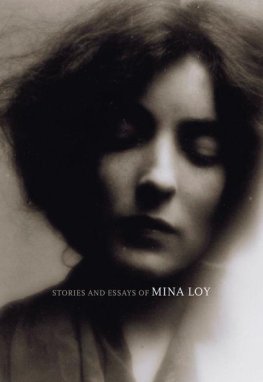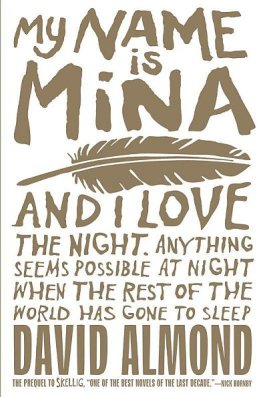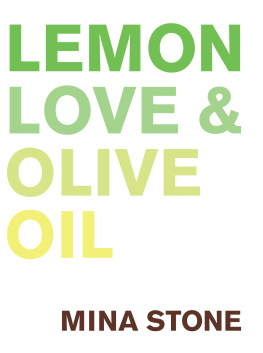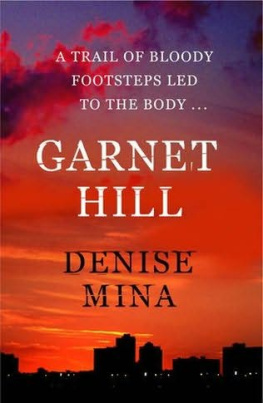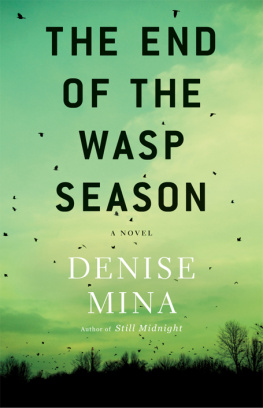Mina Loy - Stories and Essays of Mina Loy
Here you can read online Mina Loy - Stories and Essays of Mina Loy full text of the book (entire story) in english for free. Download pdf and epub, get meaning, cover and reviews about this ebook. year: 2011, publisher: Dalkey Archive Press, genre: Prose. Description of the work, (preface) as well as reviews are available. Best literature library LitArk.com created for fans of good reading and offers a wide selection of genres:
Romance novel
Science fiction
Adventure
Detective
Science
History
Home and family
Prose
Art
Politics
Computer
Non-fiction
Religion
Business
Children
Humor
Choose a favorite category and find really read worthwhile books. Enjoy immersion in the world of imagination, feel the emotions of the characters or learn something new for yourself, make an fascinating discovery.
Stories and Essays of Mina Loy: summary, description and annotation
We offer to read an annotation, description, summary or preface (depends on what the author of the book "Stories and Essays of Mina Loy" wrote himself). If you haven't found the necessary information about the book — write in the comments, we will try to find it.
Stories and Essays of Mina Loy — read online for free the complete book (whole text) full work
Below is the text of the book, divided by pages. System saving the place of the last page read, allows you to conveniently read the book "Stories and Essays of Mina Loy" online for free, without having to search again every time where you left off. Put a bookmark, and you can go to the page where you finished reading at any time.
Font size:
Interval:
Bookmark:
Mina Loy
Stories and Essays of Mina Loy
INTRODUCTION
Born in London in 1882, Mina Loy was an artist, inventor, novelist, actor, and prose writer, but as yet, her foothold in modernist history is secured by her poetry. Loy remains best known for a collection of poems entitled Lunar Baedecker that she published in Paris in 1923.1 The title poem is a travel guide to a lunar landscape that is decadent and deteriorating, a heady combination of modern and ancient. Here, Delirious avenues are
lit
with the chandelier souls
of infusoria
from Pharaohs tombstones
Loys cityscape contains not a red-light but a white-light district of lunar lusts; the moon hosts a desire strangely bled of colour and vitality. As the poem nears its conclusion, its setting is likened to a fossil virgin and a Crystal concubine (Lost LB 812). This moon encompasses the prehistoric, petrified remains of plants and animals, as well as a state of inviolate chastity, a newness and navet; Loys is a celestial object made of a substance so pure and transparent it is associated with prophetic powers, but is simultaneously akin to a kept woman sullied by her dependency on a man. This poem shows Loy at her oxymoronic best; in part, it is her fondness for surprising, even disorienting juxtapositions of high and low that defines her writing as modernist. These self-same practices arise time and again in Stories and Essays of Mina Loy, a volume that aims to broaden awareness of a writer and her era.
Mina Loy was unquestionably immersed in the key events and radical aesthetics of her time. She studied art in London and Berlin respectively, becoming a member of the prestigious Paris Salon in 1906; in 1913, Loy befriended the leaders of Futurism F. T. Marinetti and Giovanni Papini; in World War I, she nursed the wounded in Italy; in 1916, Loy moved to New York and immediately became part of the circle of avant-garde artists regularly entertained by Walter and Louise Arensberg, a group including Dadaists Marcel Duchamp and Man Ray; in the 1920s, she started a lamp-making business in Paris with the financial backing of the American art collector Peggy Guggenheim; in the 1930s, she worked as the representative for her son-in-law, Julien Levy, purchasing surrealist art in Paris for his New York gallery; in 1959, on the basis of six decades of creative productivity, Loy received the Copley Foundation Award for Outstanding Achievement in Art. Loy participated in artistic communities on three continents, and even the most cursory list of her associates reads like a compendium of modernist greats: among many others, Loy knew Djuna Barnes, Natalie Barney, Basil Bunting, Joseph Cornell, James Joyce, Alfred Kreymborg, Robert McAlmon, Marianne Moore, Alfred Stieglitz, Gertrude Stein, Carl Van Vechten, William Carlos Williams and, pivotally, her husband Arthur Cravan. Throughout her life, Loy wrote avidly: her work appeared in era-defining periodicals such as The Little Reviewthe journal that first published extracts from Ulyssesand The Dial, which debuted T. S. Eliots The Waste Land. Loys work was reviewed and praised by Eliot and Yvor Winters; she was lauded, edited, and published by Ezra Pound.
Loys widespread recognition suggests that her place must be firmly anchored in twentieth-century literary history, but as modernism became an aesthetic construct, Loy did not become part of its canon, a fate she shared with many of her female peers. Loy died in 1966 having published only two books: Lunar Baedecker (1923) and Lunar Baedeker and Time-Tables (1958).2 As explanations for her waning popularity, critics point to Loys reclusiveness, as well as her disinterest in self-promotion and publishing in her later years. However, it should be borne in mind that Loy was only ever well known within avant-garde circles, and even there, she often remained on the periphery. Although associated with Futurism Dada, and Surrealism, she remained, as Kenneth Rexroth writes, like those kings whom history has always given a bad press because no party wanted to claim them (701).3 One of Loys most ardent fans, Rexroth triumphantly and prematurely announced Loys return to the cultural map in 1971. She has been rediscovered, Rexroth writes, and when the present generation the counter culture can find her poems, they are read with enthusiasm (72). How can a writers work be reclaimed if it cannot even be located?
This difficulty was addressed in part in 1982, when Roger L. Conover edited the third volume of Loys writing, The Last Lunar Baedeker. This edition, now out of print, remains the most complete; it contains Loys long autobiographical poem, Anglo-Mongrels and the Rose, as well as a great deal of previously uncollected poetry and prose. In 1996, Conover published another book, entitled The Lost Lunar Baedeker. While shorter than the 1982 volume, the later collection is the most widely available and accurate to date; it restores, for instance, the layout and punctuation of Loys celebrated poem sequence, Songs to Joannes.4 Alongside these primary sources emerged criticism such as Virginia M. Kouidiss Mina Loy: American Modernist Poet (1980), Carolyn Burkes biography, Becoming Modern: The Life of Mina Loy (1996), and the essay collection Mina Loy: Woman and Poet (1998). Loy is increasingly found on university curricula, and her work has been explored in recent doctoral dissertations addressing subjects as varied as abjection, satire, and avant-garde poetics. The growing body of Loy articles has led to a second set of essays: The Salt Companion to Mina Loy (2010). Indeed, should her popularity continue to grow, Loy may well become the next representative woman modernista vexatious title, both laudatory and reductive, that has alternately been assigned to Virginia Woolf and Gertrude Stein over the past few decades. And, although a quintessential modernist in many respects, Loy is increasingly perceived as a writer whose scepticism and indeterminacy anticipate postmodern aesthetics.5 In the twenty-first century, everyone wants a piece of Mina Loy.
As the publication of this volume indicates, the reclamation of Loys oeuvre is far from over. Stories and Essays includes the vast majority of shorter prose stored in Loys papers at the Beinecke Rare Book and Manuscript Library at Yale; not one of these writings has been collected, and most of them have never been published. But this book is by no means a complete survey. A number of Loys key prose writings are already available in Conovers two Lunar Baedekers, which include Loys Aphorisms on Futurism the much-anthologised Feminist Manifesto, and landmark essays such as Modern Poetry.6 Additionally, Loy generated a number of novel manuscripts: early works such as Brontolivido and Esau Penfold (written during or shortly after Loys later years in Florence, 191416), and mid-career narratives entitled The Child and the Parent, Islands in the Air, and Goy Israels (products of the late 1920s and early 1930s).7 Loys only published novel is Insel, which was written in the 1930s, and is not currently in print.8 Again, the availability of her writing, and lack thereof, has had a considerable hand to play in the shaping of Loys reputation.
This dearth of published material has meant that most readers remain unaware that Loy the poet was an equally active writer of narratives, criticism, and cultural commentary. Loy wrote her first poem, The Beneficent Garland in 1914; in this same year or the next she began the play The Sacred Prostitute; shortly thereafter, she embarked upon another drama, The Pamperers. While dates of composition are rarely given in Loys papers, certainties include 1921 for The Stomach and The Oil in the Machine? as well as 1925 for one draft of Gate Crashers of Olympus. Loys lecture Gertrude Stein was given at Natalie Barneys salon in 1927, and there exists good evidence that In Maine: Greens Colony was written in the late 1920s or early 1930s. Loys thoughts on William Carlos Williams were mailed on June 5th 1948, while Tuning in on the Atom Bomb is evidently a product of World War II or its immediate aftermath. Lastly, Carolyn Burke claims that History of Religion and Eros was written during the years that Loy lived in New Yorks Bowery District, namely 19481953 (
Font size:
Interval:
Bookmark:
Similar books «Stories and Essays of Mina Loy»
Look at similar books to Stories and Essays of Mina Loy. We have selected literature similar in name and meaning in the hope of providing readers with more options to find new, interesting, not yet read works.
Discussion, reviews of the book Stories and Essays of Mina Loy and just readers' own opinions. Leave your comments, write what you think about the work, its meaning or the main characters. Specify what exactly you liked and what you didn't like, and why you think so.

